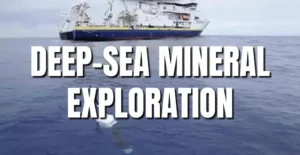1. Crime in India 2023 – NCRB Report Highlights Surge in Cybercrime – Governance
Why in News?
The National Crime Records Bureau (NCRB) released its Crime in India 2023 report after a two-year gap. A major takeaway from the report is the sharp rise in cybercrime incidents across the country, indicating increasing vulnerabilities in India’s digital ecosystem.
Key Highlights of the Report
Overall crime rate increased by 7.2% – Total cases: 6.24 million in 2023.
Decline in violent crimes:
Murder: Down by 2.8%
Rape: Down by 5.9%
Cybercrime increased by 31.2% – 86,420 cases reported in 2023.
Economic offences also rose by 6%, totaling 204,973 cases.
Cybercrime Trends (2018–2023)
| Year | Cybercrime Cases |
|---|---|
| 2018 | 27,248 |
| 2019 | 44,735 |
| 2020 | 50,035 |
| 2021 | 52,974 |
| 2022 | 65,893 |
| 2023 | 86,420 |
Motives behind Cybercrime in 2023:
Fraud: 59,526 cases (68.9%)
Sexual Exploitation: 4,199 cases (4.9%)
Extortion: 3,326 cases (3.8%)
State-wise Distribution:
Karnataka: 21,889 cases
Telangana: 18,236 cases
Uttar Pradesh: 10,794 cases
Issues and Challenges
Lack of cyber policing units in many districts.
Low conviction rate in cybercrime due to lack of technical investigation skills.
Underreporting of cyber offences, especially in rural areas.
Rising threats like phishing, deepfakes, ransomware, and AI-driven scams.
Exam Connect – Possible Questions
Prelims
1. According to NCRB’s Crime in India 2023 report, what was the percentage rise in cybercrime cases compared to 2022?
A. 15.4%
B. 22.1%
C. 31.2%
D. 38.5%
Answer: C. 31.2%
2. Which Indian state recorded the highest number of cybercrime cases in 2023?
A. Maharashtra
B. Karnataka
C. Uttar Pradesh
D. Telangana
Answer: B. Karnataka
Mains
1. “The surge in cybercrime in India reveals the new-age challenges of governance.” Discuss the key factors behind rising cybercrime and suggest policy-level measures to address them.
2. Cybercrime is no longer just a law and order issue but a threat to national security and public trust in digital governance. Examine this statement in the Indian context, with suggestions to improve cyber policing and digital safety.
2. India Secures Second Deep-Sea Mineral Exploration Contract in Indian Ocean – Science and Technology
Why in News?
India has signed a second deep-sea exploration contract with the International Seabed Authority (ISA) to explore Polymetallic Sulphides (PMS) in the Carlsberg Ridge of the Indian Ocean. This makes India the first country in the world to hold two active contracts with the ISA for PMS exploration, positioning it as a global leader in seabed mining initiatives.
Key Highlights
The new contract grants India exclusive rights to explore 10,000 sq km in the Carlsberg Ridge.
Exploration will be undertaken by the National Centre for Polar and Ocean Research (NCPOR) starting in 2026.
🇮🇳 India’s first ISA contract for PMS exploration was signed in 2016 for the Central and Southwest Indian Ridges.
With two contracts, India now commands the largest seabed area globally allocated for PMS exploration.
What are Polymetallic Sulphides (PMS)?
PMS are mineral-rich deposits found near hydrothermal vents on the ocean floor.
They form when seawater interacts with magma, releasing hot mineral-rich fluids that solidify into PMS.
Key metals found in PMS:
Copper, Zinc, Lead, Silver, Gold
Trace amounts of rare earth elements – crucial for electronics and renewable energy.
Strategic Importance of PMS Exploration
Scientific & Economic Relevance:
India has limited terrestrial mineral reserves, especially for critical and rare metals.
PMS can support:
Electronics and battery manufacturing
Green technologies (solar panels, wind turbines)
Defence and aerospace sectors
Geopolitical & Resource Security:
Enhances India’s strategic autonomy in securing critical minerals.
Part of India’s broader Blue Economy and Deep Ocean Mission strategy.
Geographical Advantage:
Carlsberg Ridge, ~40 million years old, is closer to India than previous sites, making exploration more feasible and cost-effective.
Challenges in PMS Exploration
Located at depths of 2,000–5,000 meters – poses significant technological and engineering challenges.
Requires remotely operated vehicles (ROVs), autonomous underwater vehicles (AUVs), and multidisciplinary expertise (geology, oceanography, robotics).
Ensuring environmental sustainability is critical due to fragile deep-sea ecosystems.
About International Seabed Authority (ISA)
Established under UNCLOS (United Nations Convention on the Law of the Sea).
Mandated to regulate mineral-related activities in international waters.
Allocates exploration areas to countries based on scientific and environmental commitments.
Exam Connect – Possible Questions
Prelims
1. What are Polymetallic Sulphides (PMS) primarily composed of?
A. Uranium and thorium
B. Copper, zinc, and precious metals
C. Coal and lignite
D. Lithium and cobalt
Answer: B. Copper, zinc, and precious metals
2. Which Indian agency has been tasked with PMS exploration in the Carlsberg Ridge?
A. DRDO
B. Geological Survey of India
C. NCPOR
D. ISRO
Answer: C. NCPOR
Mains
1. India’s leadership in deep-sea exploration marks a shift towards ocean-based resource security. Examine the strategic and economic importance of deep-sea mineral exploration for India.
2. While deep-sea mining offers critical resource advantages, it poses serious environmental and technological challenges. Discuss India’s preparedness and the way forward for sustainable ocean mining.
3. Bihar Adds 2 More Wetlands to Ramsar List – Environment
Why in News?
India has added two wetlands from Bihar—Gokul Jalashay (Buxar) and Udaipur Jheel (West Champaran)—to the Ramsar List of Wetlands of International Importance, reflecting India’s continued commitment to wetland conservation and biodiversity protection.
Key Highlights
With these additions, India now has 93 Ramsar sites, making it:
The 3rd highest in the world
A leader in Asia
Ramsar-listed wetland area in India: 13.6 lakh hectares
Global Ramsar sites: 2,544 across 173 member countries
UK: 176 sites (highest)
Mexico: 144 sites (2nd)
Rapid growth in India: From 26 sites in 2012 → 93 in 2025
51 new sites added since 2020
Tamil Nadu has the highest number of Ramsar sites (20), followed by Uttar Pradesh (10)
Details of Newly Added Wetlands
Gokul Jalashay (Buxar, Bihar)
Type: Oxbow lake near southern edge of the Ganga River
Size: 448 hectares
Functions:
Acts as flood buffer
Supports 50+ bird species
Provides livelihood via fishing, irrigation, and agriculture
Udaipur Jheel (West Champaran, Bihar)
Type: Oxbow lake formed by the Gandaki River
Size: 319 hectares
Significance:
Part of Udaipur Wildlife Sanctuary
Enhances ecological connectivity
Supports migratory birds via the Central Asian Flyway
Conceptual Understanding: Ramsar Convention & Criteria
About the Ramsar Convention
Adopted: February 2, 1971 in Ramsar, Iran
India joined: 1982
First Indian Ramsar Site: Chilika Lake, Odisha (1981)
Aims to ensure the conservation and sustainable use of wetlands globally.
Ramsar Site Declaration – Key Criteria (any one is enough):
Represents unique/rare wetland types
Supports endangered/vulnerable/endemic species
Vital habitat for migratory waterbirds
Key site for biodiversity and ecosystem services
Offers flood control, water purification, recharge
Holds cultural, recreational or spiritual value
Provides sustainable livelihood to communities
Faces ecological threats requiring international cooperation
Environmental and National Significance
Promotes India’s biodiversity commitments under international treaties like CBD and SDGs
Critical for:
Climate resilience (wetlands act as carbon sinks and flood buffers)
Livelihood security for rural and tribal communities
Migration corridors for birds (especially via Central Asian Flyway)
Aligns with India’s National Wetland Conservation Programme and National Action Plan on Climate Change
Exam Connect – Possible Questions
Prelims
1. Which of the following is not a valid criterion for declaring a Ramsar Site?
A. Site must be located in a coastal region
B. Site supports vulnerable or endangered species
C. Site provides flood control and water purification
D. Site supports migratory bird species
Answer: A. Site must be located in a coastal region (Not a requirement)
2. Which of the following statements about Gokul Jalashay is correct?
A. It is a glacial lake in the Himalayas
B. It is an oxbow lake located in Bihar
C. It is India’s first Ramsar site
D. It is located in Tamil Nadu
Answer: B. It is an oxbow lake located in Bihar
Mains
1. “Wetlands are the kidneys of the earth.” In the context of India’s growing Ramsar site network, examine the ecological and livelihood importance of wetlands.
2. Discuss the role of international conventions like Ramsar in supporting India’s wetland conservation efforts. Highlight challenges in wetland governance and suggest measures for sustainable wetland management.
4. India Pushes E-Waste Recycling Amid Collection Challenges – Environment
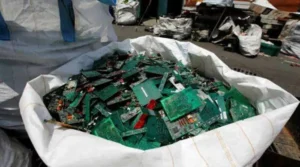
Why in News?
As India promotes electronics manufacturing through schemes like semiconductor fabs and the Electronics Component Manufacturing Scheme, e-waste management has emerged as a serious challenge. With millions of tonnes of electronics discarded, the government is pushing for better recycling systems to recover scarce, valuable metals and reduce environmental and health risks.
Key Highlights
India generated ~4.17 million metric tonnes of e-waste in 2022.
Only about one-third of this waste was processed correctly.
Common e-waste items: smartphones, laptops, TVs, fridges, batteries, chargers.
E-waste contains precious metals (gold, silver, copper) and toxic materials (lead, mercury, cadmium).
Improper handling leads to pollution and health hazards.
Legal & Regulatory Framework
E-Waste (Management) Rules, 2022
Came into force on April 1, 2023
Aimed at reducing the harmful effects of e-waste on health and the environment.
Focuses on scientific recycling and formalising the e-waste sector.
Extended Producer Responsibility (EPR)
Mandates manufacturers/producers to collect and recycle end-of-life electronic products.
Encourages design changes for longer product life and resource efficiency.
Conceptual Understanding: Why E-Waste Recycling is Crucial
Health Hazards:
Toxic metals like lead and cadmium can cause:
Neurological disorders
Respiratory issues
Kidney and liver failure
Developmental defects in children
Environmental Impact:
Informal sector practices (burning, acid baths) pollute:
Soil → loss of fertility
Water bodies → contamination of groundwater
Air → toxic emissions increase climate risks
Economic & Resource Value:
E-waste is a “mine above ground”:
Recoverable metals like gold, silver, copper
Crucial for semiconductors, renewable energy, and electronics
India can meet rare earth requirements domestically within 18 months if recycling is improved.
Challenges in E-Waste Management
Informal sector dominance (~90% of recycling) leads to:
Unsafe working conditions
Lack of accountability
Pollution and loss of valuable materials
Low public awareness
Inadequate collection infrastructure
Lack of integration between stakeholders (municipal bodies, recyclers, producers)
Way Forward
Strengthening formal recycling ecosystem
Awareness campaigns to improve consumer participation
Investment in e-waste collection centres
Tech-based tracking of EPR compliance
Collaboration with startups, local bodies, and informal workers
Exam Connect – Possible Questions
Prelims
1. Under the E-Waste (Management) Rules, 2022, which principle makes producers responsible for collecting and recycling their products?
A. Polluter Pays Principle
B. Extended Producer Responsibility
C. User Charges Principle
D. Corporate Social Responsibility
Answer: B. Extended Producer Responsibility
2. Which of the following metals is commonly recovered from e-waste?
A. Lithium
B. Uranium
C. Gold
D. Nickel
Answer: C. Gold
Mains
1. “E-waste management is as much about health and environment as it is about economic opportunity.” Discuss India’s regulatory approach and suggest improvements for sustainable e-waste recycling.
2. With the rapid expansion of the electronics sector, India faces a looming e-waste crisis. Evaluate the role of formal and informal sectors in e-waste management. Suggest measures to bridge the gap.
5. More Women Employed in Agriculture, but Half of Them Are Unpaid – Economy
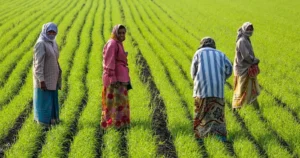
Why in News?
India’s economic growth strategy increasingly emphasizes women-led development, especially in agriculture, where women now account for 42% of the workforce. However, despite this surge, over half of female agricultural workers remain unpaid, highlighting deep systemic inequities in ownership, recognition, and remuneration.
Key Highlights
135% increase in women’s employment in agriculture over the last decade.
42% of the agricultural workforce is now female.
Unpaid women workers:
23.6 million (2017–18) → 59.1 million (2023–24)
In Bihar and Uttar Pradesh, over 80% of working women are in agriculture, more than half unpaid.
One in three working women nationwide is unpaid.
Structural Inequities in Women’s Agricultural Work
| Issue | Data/Insight |
|---|---|
| Land ownership | Only 13–14% of land titles held by women. Limits access to credit, insurance, and government schemes. |
| Wage disparity | Women earn 20–30% less than men for the same tasks. |
| Work type | Women concentrated in subsistence farming and low-margin work with no decision-making power. |
| Economic contribution | Despite more women, agriculture’s GVA share declined: 15.3% (2017–18) → 14.4% (2024–25). |
Opportunities: Trade & Technology as Equalizers
Global Trade Trends
India–UK FTA: Likely to boost agri exports by 20% in 3 years.
Women already engaged in export-oriented sectors like:
Spices, tea, dairy – areas with high potential.
With support, women can shift from laborers to entrepreneurs in value-added exports.
Technology as a Game Changer
Platforms like e-NAM and mobile advisory apps help market access.
Barriers:
Low digital literacy
Language limitations
Solutions:
BHASHINI platform: Multilingual digital access.
Digital Sakhi: Trains rural women in digital tools for entrepreneurship.
Programs in Odisha, Rajasthan promote branding, digital exports.
Structural Reforms Needed
| Area | Reform Suggestion |
|---|---|
| Land | Promote joint/individual ownership for women to access benefits. |
| Labour | Recognize women as independent farmers, not helpers. |
| Value Chains | Train and support women in processing, branding, exporting. |
| Institutional Support | Scale multi-stakeholder models that combine finance, training, and market linkage. |
Exam Connect – Possible Questions
Prelims
1. According to recent data, approximately what percentage of the agricultural workforce in India is made up of women?
A. 25%
B. 35%
C. 42%
D. 50%
Answer: C. 42%
2. Which of the following is not a barrier to women’s empowerment in Indian agriculture?
A. Lack of land titles
B. Access to high-margin export crops
C. Gender wage gap
D. Low digital literacy
Answer: B. Access to high-margin export crops
Mains
1. Despite being the backbone of rural agriculture, women continue to be invisible in policy and recognition. Examine the structural issues affecting women in Indian agriculture and suggest comprehensive reforms.
2. Trade and technology can help bridge the gender gap in agriculture. Discuss the role of digital tools and global market integration in transforming women from agricultural laborers into agri-entrepreneurs.
6. Kokrajhar–Gelephu and Banarhat–Samtse Railway Lines to Bhutan – International Relations
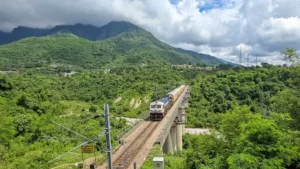
Why in News?
India and Bhutan have inaugurated their first-ever cross-border railway links connecting:
Kokrajhar (Assam, India) – Gelephu (Bhutan) – 69 km
Banarhat (West Bengal, India) – Samtse (Bhutan) – 20 km
This historic initiative deepens India–Bhutan bilateral ties, enhances connectivity and trade, and reflects India’s growing strategic engagement with its Himalayan neighbor.
Key Highlights
Kokrajhar–Gelephu Line:
69 km long
6 stations
Designed to accommodate Vande Bharat trains
Expected to be completed in 4 years
Banarhat–Samtse Line:
20 km long
2 stations, bridges, and underpasses
To be completed in 3 years
Electrification: Both lines will be fully electrified
Will connect Bhutan directly to India’s rail network, boosting regional connectivity
Bilateral Significance
🇮🇳🇧🇹 Bhutan is India’s closest strategic partner and the largest recipient of Indian development assistance.
These rail projects were agreed during PM Modi’s Bhutan visit (2024) and formalized in 2025.
They strengthen bilateral ties through infrastructure, trade, and people-to-people contact.
Strategic & Geopolitical Importance
Regional Security
Counters China’s expanding influence in Bhutan and South Asia.
Reinforces India’s leadership in regional infrastructure diplomacy.
Economic Integration
Supports Bhutan’s economy, where 80% of trade is with India.
Facilitates hydropower exports, industrial growth, and logistics connectivity.
Tourism and Culture
Promotes people-to-people ties by connecting:
Gelephu’s upcoming “Mindfulness City”
Samtse’s industrial zone
Enhances cross-border movement and cultural engagement.
Act East Policy
The initiative is a step forward in India’s Act East Policy, aimed at improving infrastructure and trade ties with Southeast Asia via the Northeast.
Rail Diplomacy
Projects Indian Railways as a tool of soft power and strategic influence in the region.
Enhances India’s “Neighbourhood First” policy.
Exam Connect – Possible Questions
Prelims
1. The Kokrajhar–Gelephu railway line connects India with which neighboring country?
A. Nepal
B. Bhutan
C. Bangladesh
D. Myanmar
Answer:B. Bhutan
2. Which Indian policy is most closely associated with cross-border infrastructure development in the northeastern region?
A. Make in India
B. Neighbourhood First
C. Act East Policy
D. Digital India
Answer:C. Act East Policy
Mains
1. Cross-border infrastructure is emerging as a key pillar of India’s diplomacy. Discuss the strategic, economic, and geopolitical implications of India’s railway projects with Bhutan.
2. India’s engagement with Bhutan reflects the balance of security, soft power, and development cooperation. Evaluate the role of transport infrastructure in strengthening bilateral relations in South Asia.
7. South-South and Triangular Cooperation Is More Than a Diplomatic Phrase – International Relations
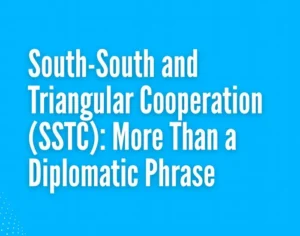
Why in News?
As the world nears the 2030 deadline for Sustainable Development Goals (SDGs), the focus is shifting toward more inclusive, equitable, and cooperative models of development. In this context, South-South and Triangular Cooperation (SSTC) is emerging as a transformative framework based on mutual respect, solidarity, and shared knowledge—especially among developing countries.
Key Highlights
SSTC refers to collaboration among developing countries (South-South), and their partnerships with traditional donors, international organizations, civil society, and private sector (Triangular Cooperation).
Institutionalized through the Buenos Aires Plan of Action (BAPA), 1978.
Promotes equality, mutual benefit, and contextual relevance in development.
Considered a cost-effective and scalable model for solving global challenges.
Conceptual Understanding of SSTC
South-South Cooperation:
Countries of the Global South exchange:
Knowledge
Resources
Technology
Development strategies
Triangular Cooperation:
Brings in third-party support:
Traditional donors (e.g., UN, EU, Japan)
International organizations
NGOs
Private sector
SSTC helps address geopolitical instability, climate crises, poverty, and inequality by leveraging homegrown solutions from similar socio-economic contexts.
India’s Leadership in SSTC
Guiding Philosophy:
Rooted in Vasudhaiva Kutumbakam – “the world is one family”
Advocates for inclusive and sovereign development partnerships
Institutional Mechanisms:
Development Partnership Administration (DPA) under MEA
Indian Technical and Economic Cooperation (ITEC) – Capacity building in 160+ countries
India–UN Development Partnership Fund:
Funded 75+ projects in 56 countries
Focus on health, education, disaster relief, energy
Technology Transfer:
Promotes Digital Public Infrastructure (DPI) models like:
Aadhaar (Digital ID)
UPI (Unified Payments Interface)
India–WFP Collaboration (Food Security Innovation):
Annapurti (Grain ATMs)
Women-led Take-Home Ration schemes
Rice fortification initiatives
Optimized supply chains in food distribution
Global Impact and the Way Forward
SSTC has supported 155+ countries over the past 30 years.
The 2025 UN Day for SSTC will focus on:
“New Opportunities and Innovation through SSTC”
Emphasizes:
Knowledge-sharing
Creative financing
Institution-building
Accountable partnerships
SSTC is no longer just diplomacy—it’s a transformative development model for achieving SDGs and building resilient and self-reliant economies.
Exam Connect – Possible Questions
Prelims
1. The Buenos Aires Plan of Action (BAPA), adopted in 1978, is associated with:
A. Climate change negotiations
B. WTO Trade Facilitation Agreement
C. South-South and Triangular Cooperation
D. G20 Financial Transparency Initiative
Answer: C. South-South and Triangular Cooperation
2. Which of the following is not an example of India’s contribution to SSTC?
A. Unified Payments Interface (UPI)
B. Annapurti Grain ATMs
C. India–UN Development Partnership Fund
D. Belt and Road Initiative (BRI)
Answer: D. Belt and Road Initiative (BRI)
Mains
1. South-South and Triangular Cooperation (SSTC) offers a homegrown, inclusive model of development. Examine India’s role and contributions to SSTC, with examples.
2. India’s development partnerships reflect a shift from aid to mutual growth. In light of SSTC, evaluate how India’s soft power and technological models are reshaping global cooperation.


